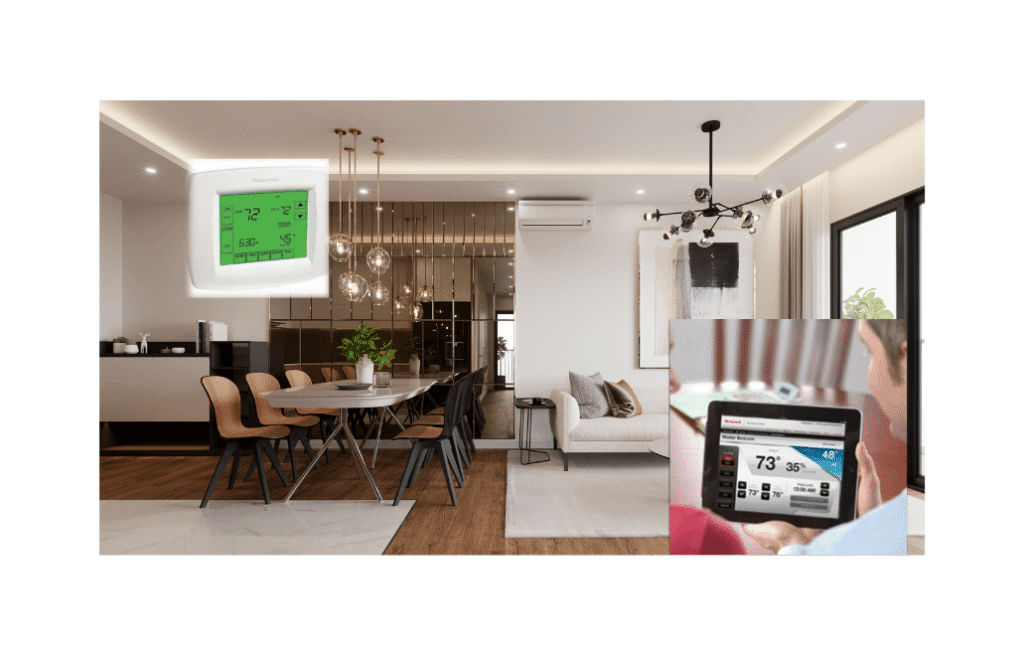Honeywell’s ‘My Total Connect Comfort’ is an internet-connected thermostat that is growing in functionality as the company continues to develop it. Whether they own a home or an office building, people worldwide can use this app to feel more relaxed and secure and save money on their utility bills.
Background
Honeywell’s Total Connect Comfort system, which includes web service, communicating thermostats, and smartphone apps, came out in October 2011. Total Connect Comfort (TCC) was also launched as an app that allows users to manage the temperature and humidity in their homes/buildings using a smart thermostat and a Wi-Fi-enabled device. In this way, the Total Connect Comfort app allows customers to check in on and control their heating and cooling systems (HVAC) from anywhere in the world, anytime.
The app and website were first well-received in North America, and their popularity quickly spread when they were released to audiences in Europe, the Middle East, and the Pacific.
New Requirement
As Honeywell kept adding new lines of thermostats to the Total Connect ecosystem, it needed more advanced features to work with the Wi-Fi connectivity and fixed-segment displays of the new thermostats.
For this purpose, the app required four new sets of procedures which include,
- Account Creation
- Wi-Fi Provisioning
- Device Registration (in-use application)
- Device Configuration (aka ISU)
Collaboration with Performix
The Solution
After seeing the success of its Total Connect ecosystem, Honeywell decided to create a Wi-Fi thermostat. These new thermostats have limited display options because they are built on fixed-segmented LCDs. Since the thermostat doesn’t have a graphical user interface (GUI) like most modern devices, it causes problems during the Wi-Fi registration process because it can’t provide a list of access points (AP) in range on its local display. To get around this problem, Honeywell devised a new way to configure the Wi-Fi access in which the thermostat acts as a temporary access point, and thus, after purchasing a thermostat, users must set it up using their mobile device (Android or iOS).
Performix proposed to accomplish this new feature in their existing TCC app and successfully built the following
- Created a screen to capture the customer information.
- Used GPS API to auto-populate where possible.
- Invoked API to save the client details to the server.
- Created Confirmation or error reporting screens.
We began with the first step/module
- Account Creation
We created a fresh UX/UI to fetch the details of the users.
The features include,
Adding a new user / creating an account (the following are the high-level steps)
- Show the “user agreement” page.
- Account Information
- Enter email address
- Confirm email
- Enter password
- Confirm password
- Personal Information
- Enter the First name
- Enter the Last name
- Using the GPS API on the smartphone, populate the address position, including
- Address
- City
- State
- Country
- ZipCode
- Secret question 1
- Answer 1
- Secret question 2
- Answer 2
- Secret question 3
- Answer 3
The images below will provide clarity.


GPS is utilized to establish the address information, and the user’s email address is used for alerts. When an account is created, location data is collected from the user’s data. Image 1.2
- Wi-Fi Provisioning
The next step is connecting the thermostat to a phone/tablet/laptop. The Wi-Fi credentials can be defined using a phone/tablet/laptop. These Wi-Fi credentials are sent to the thermostat using HTTP GET, i.e., the home network details are sent to the thermostat, and the new thermostat gets connected to the home Wi-Fi network.
- Device Registration (in-use application)
Ultimately, the smart thermostat was configured with the TCC app. To accomplish this, we developed a special API to retrieve the gadget’s MAC address and CRC.
Username, password, MAC ID, CRC, location name, and location ID were all used for data collection.
- Device Configuration (aka ISU)
With this function, the thermostat “learns” how long it takes for the heating and cooling systems to achieve the desired temperature, allowing the user to set the temperature and reach it at the exact time the user wants.
To ensure that this System Setup (ISU) is straightforward, our developers meticulously crafted it.
The thermostat setup/device configuration involves a dialog between a web/mobile interface and the device, which utilizes a lot of energy and shouldn’t take place on a battery-powered Wi-Fi access point while in AP mode.
For this exchange, we developed a set of multiple messages to facilitate the dialog. Each dialog entails the following messages.
- The thermostat receives an ISU value (setting temperature, time, etc.) from a web or mobile device; this value is obtained by the user’s interaction with a natural language interface.
- The thermostat announces the upcoming Interaction Sequence Update (ISU), its related inquiry in natural language, and a list of potential responses.
- All this requires the thermostat to be online during device configurations.
Conclusion
Wi-Fi-enabled smartphones or tablets for all domestic conveniences have proliferated in the digital era. This TCC app from Honeywell will take advantage of the thermostat’s capabilities, such as its ability to display and modify the schedule, system fans, and humidifier and dehumidifier settings.
This new and improved function makes it simple for customers to sync the thermostat with their mobile device and control it from virtually anywhere at any time.

